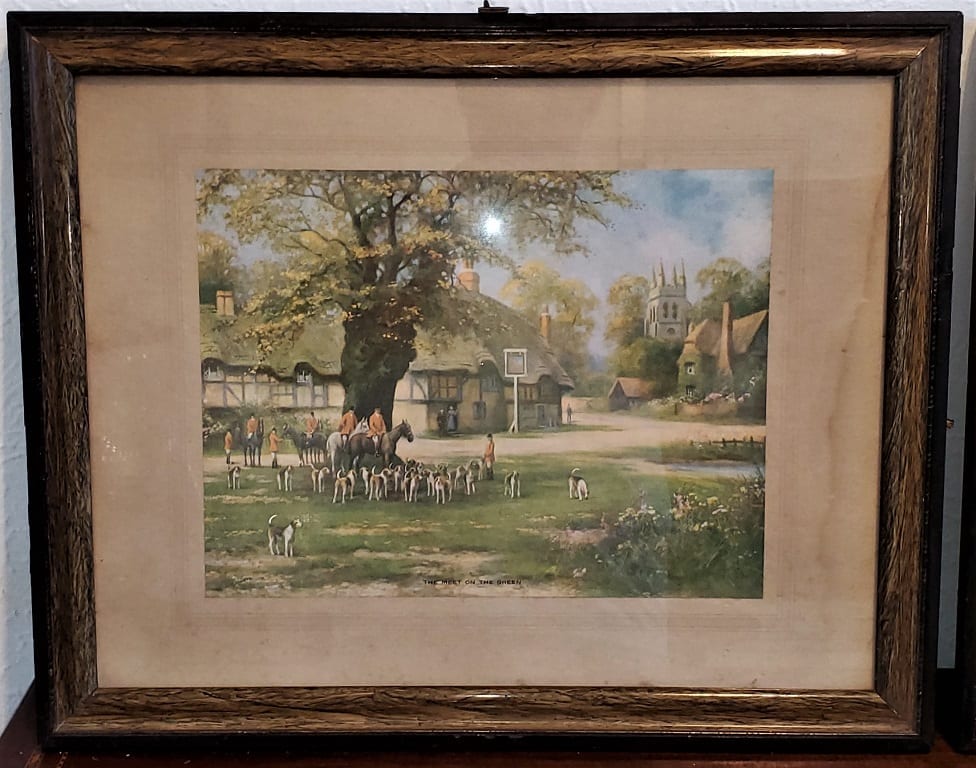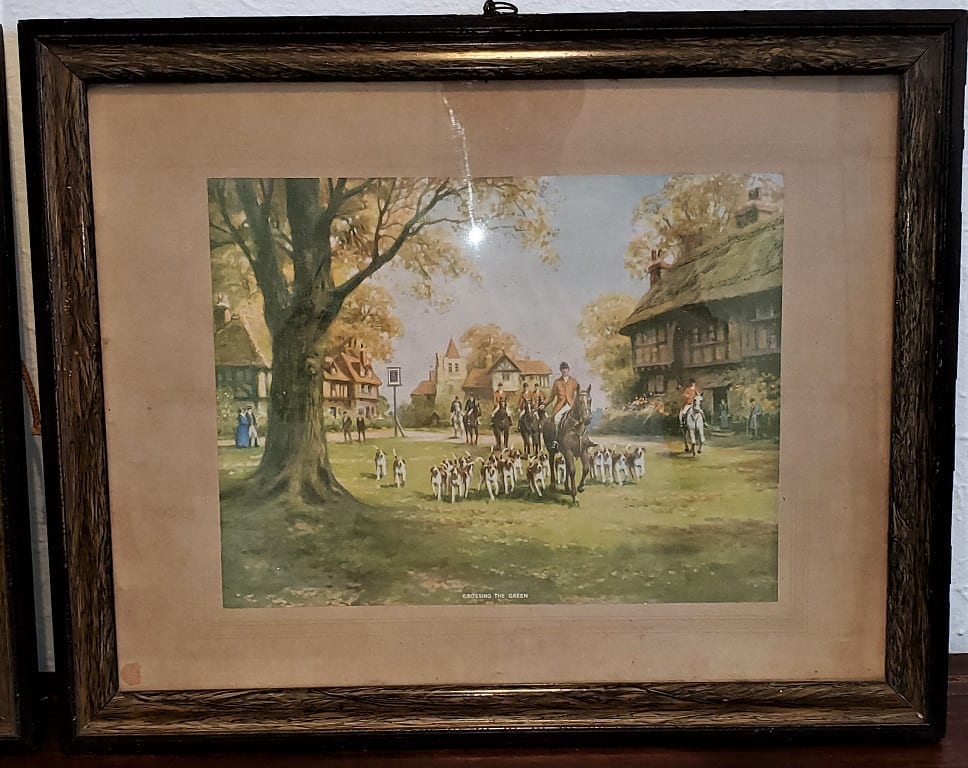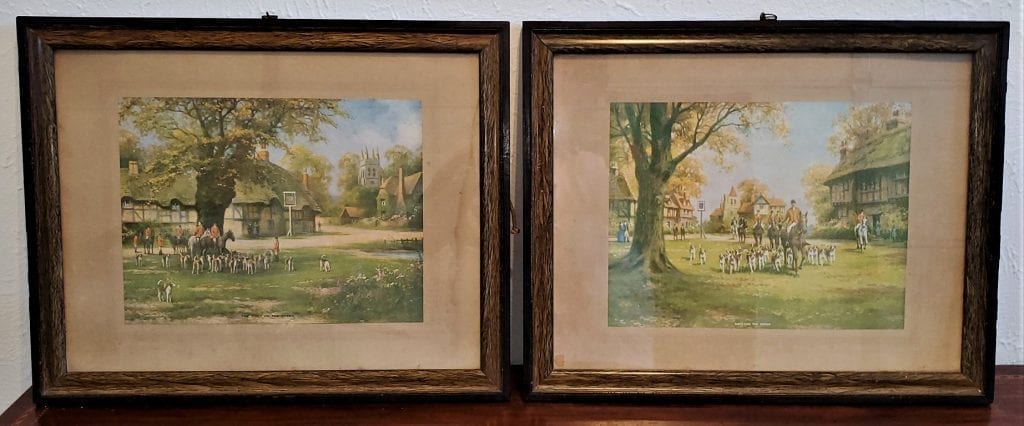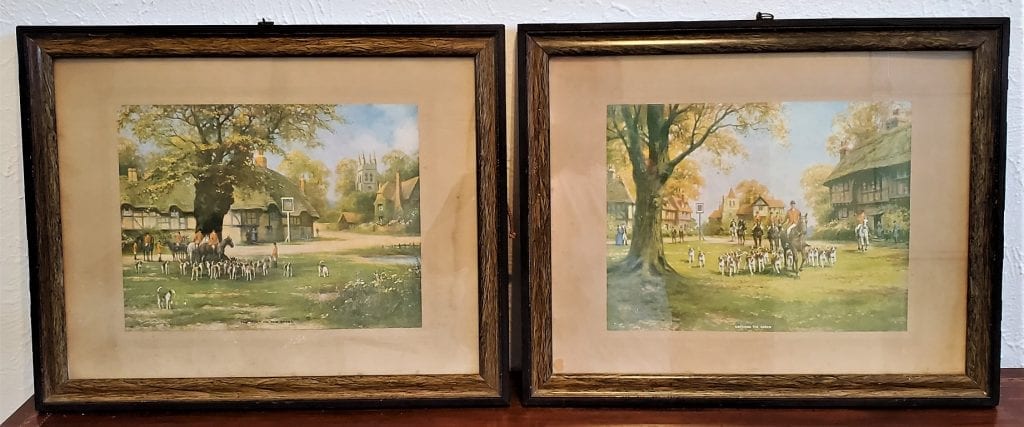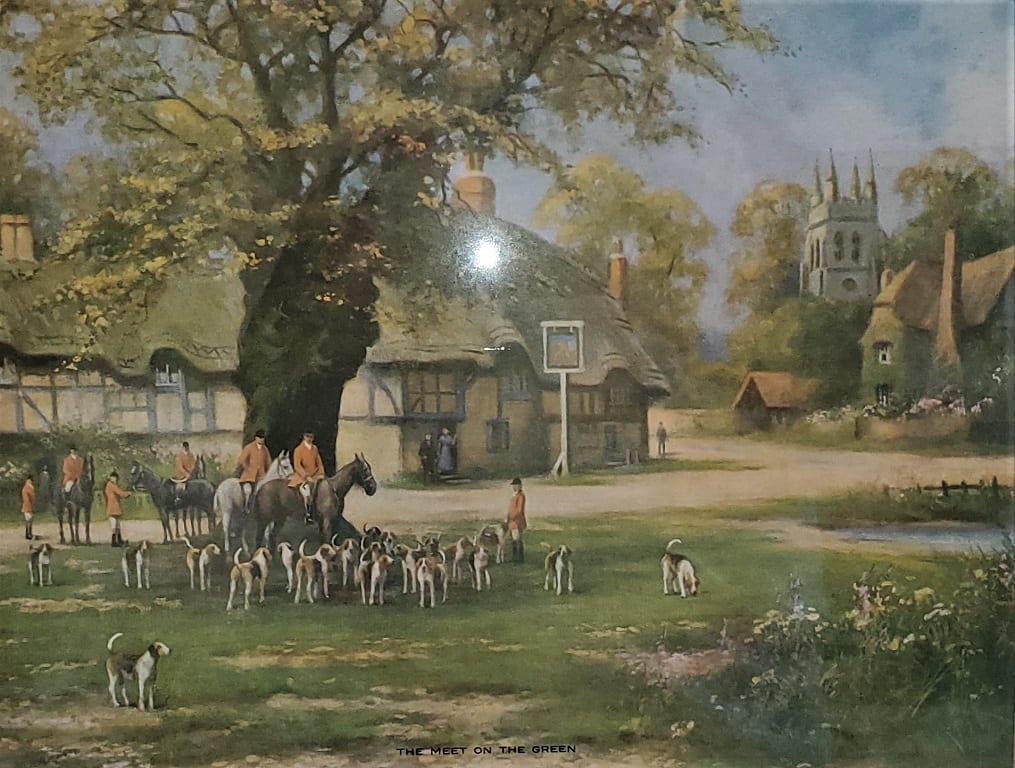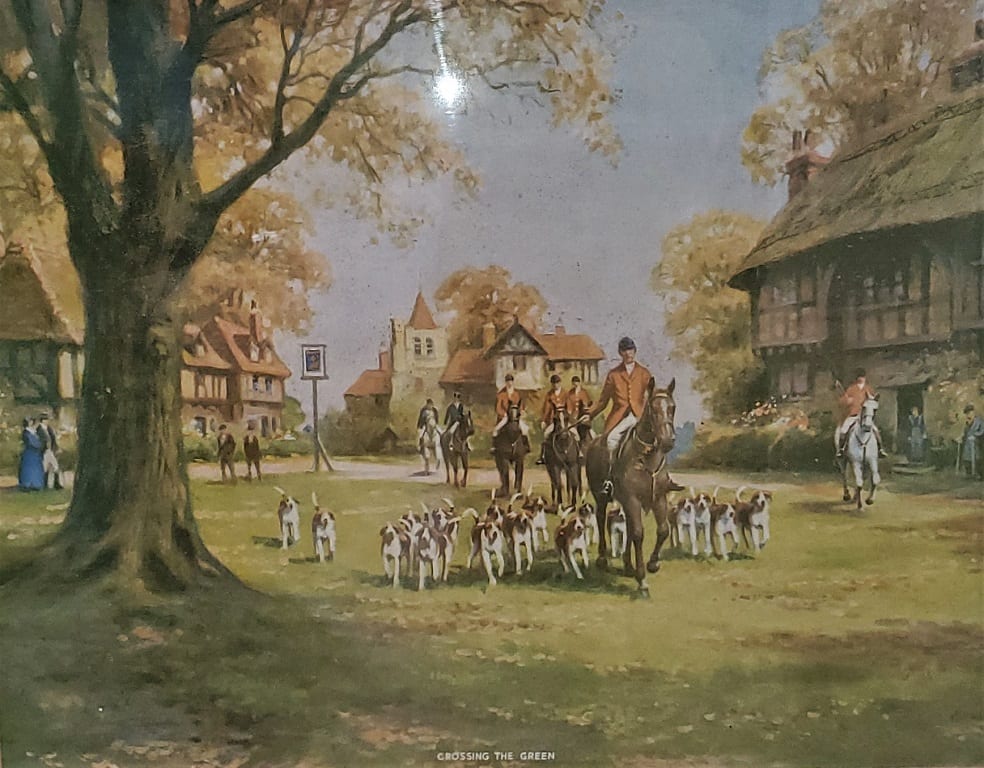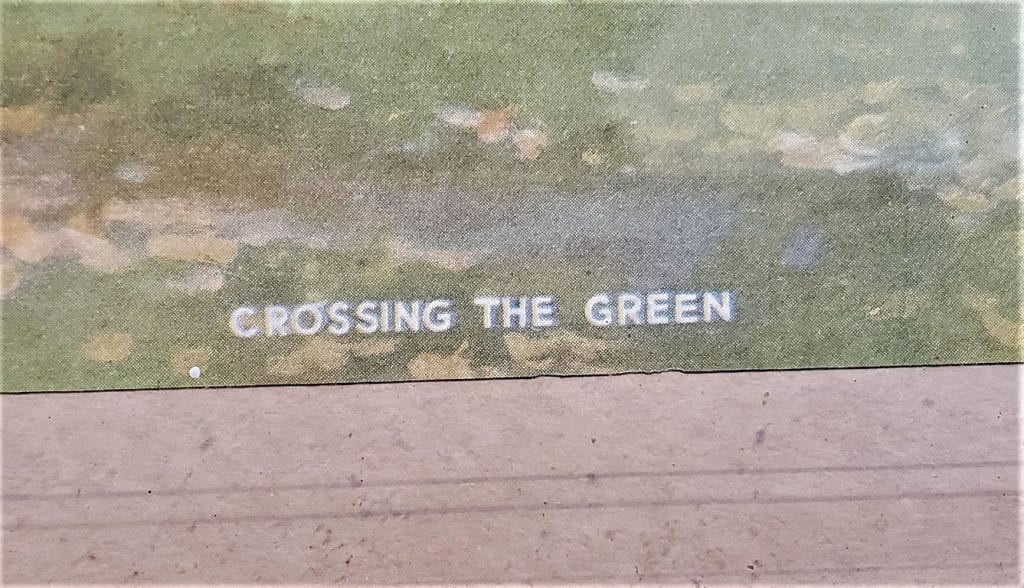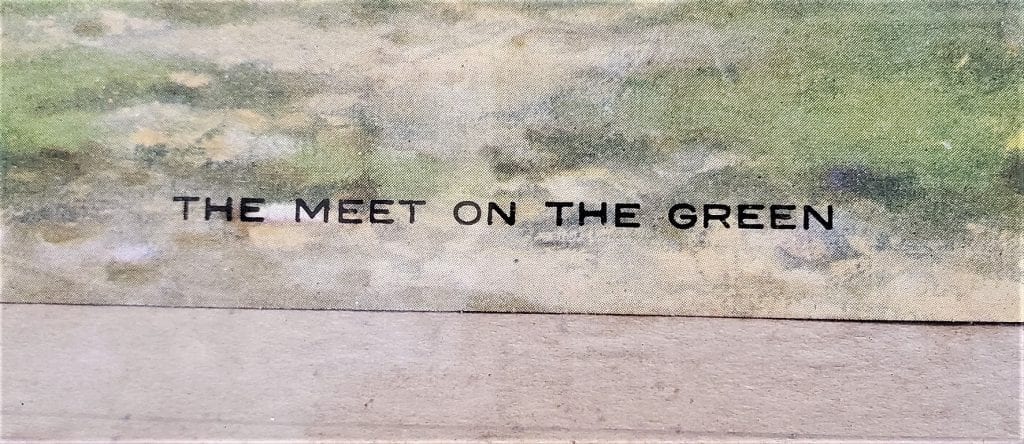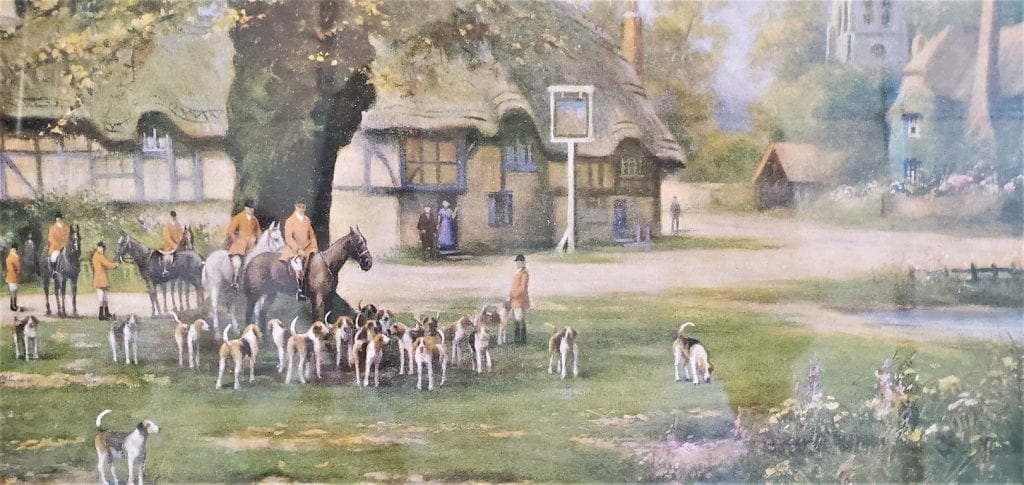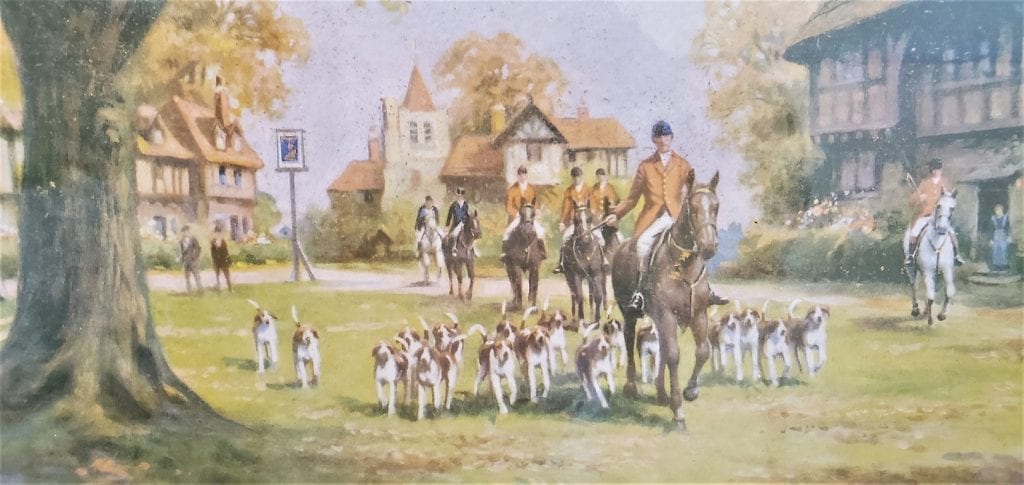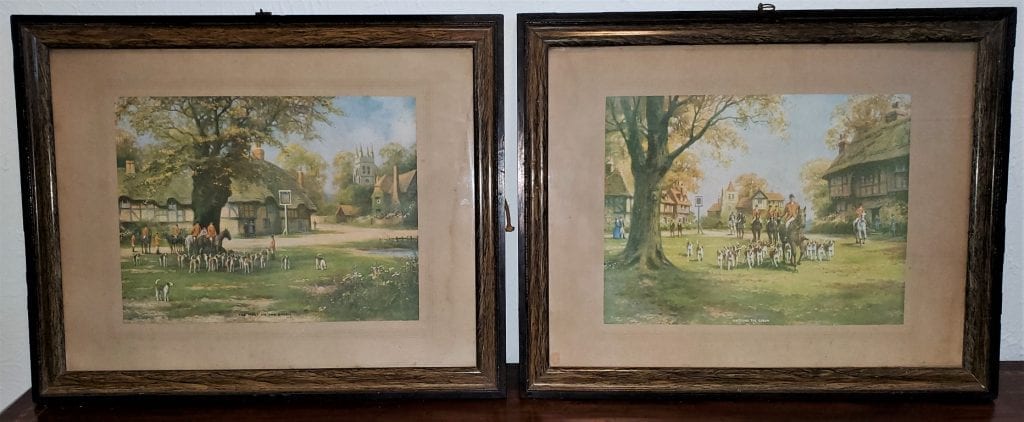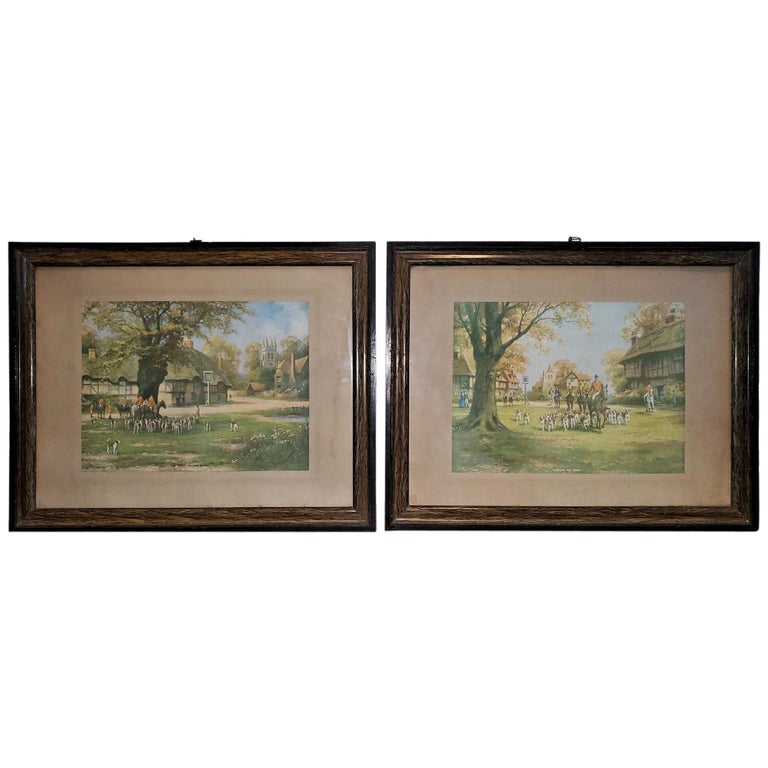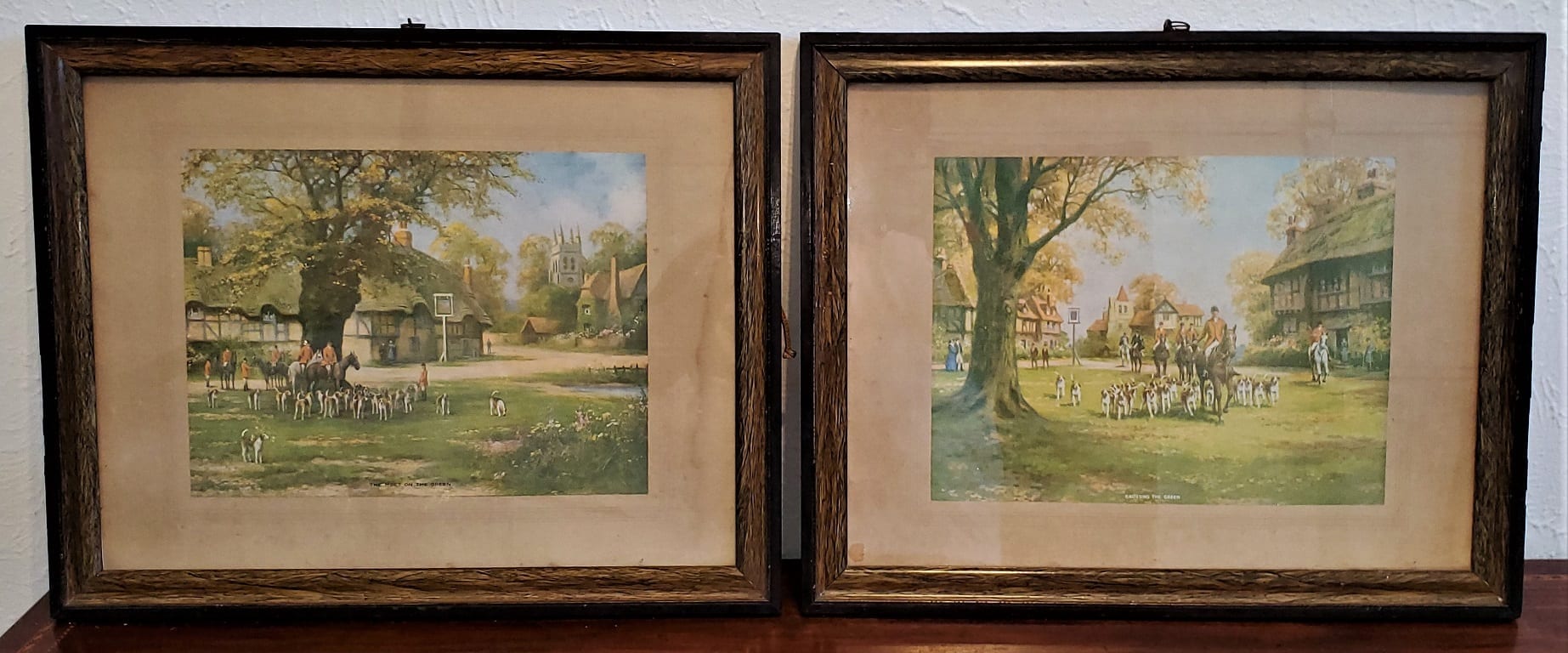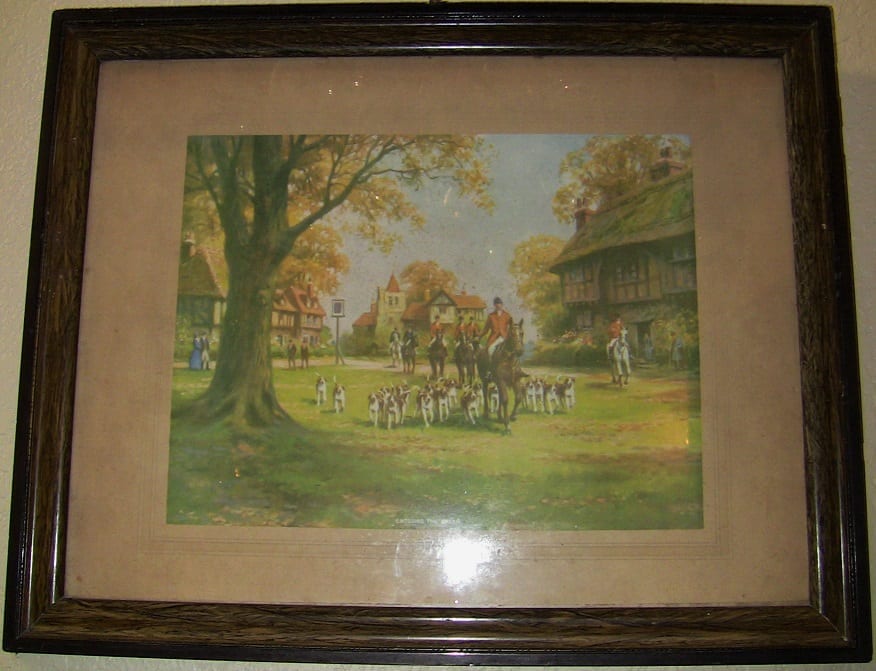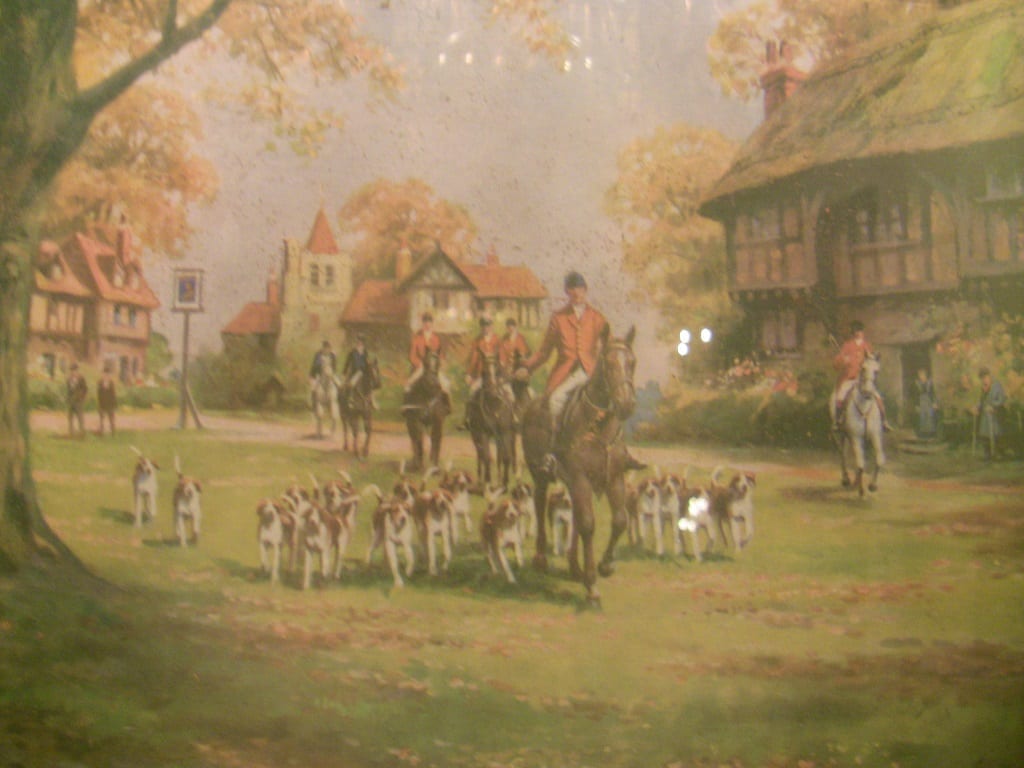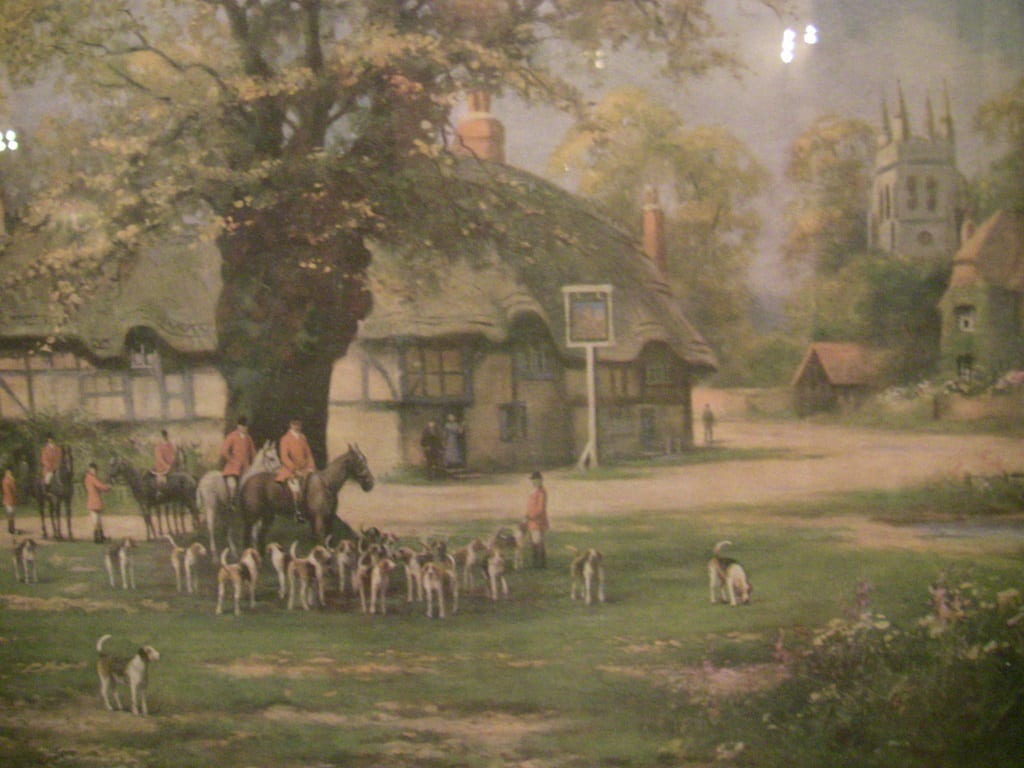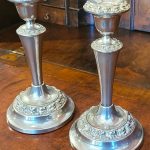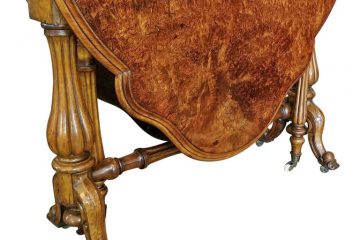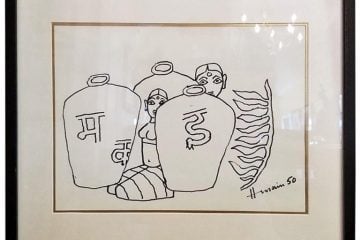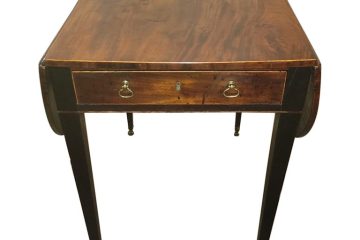19C Pair of British Hunt Prints of The Meet on the Green and Crossing the Green
PRESENTING a LOVELY 19c Pair of British Hunt Prints of ‘The Meet on the Green’ and ‘Crossing the Green’.
Very nice pair of rare prints from the late 19th Century, circa 1890.
British, unattributed, scenes of ‘The Hunt”.
In their original frames, original matting and under glass.
The first print is labelled “The Meet on the Green” and the second one is called “Crossing the Green”
Both scenes depict the gathering of ‘The Hunt party’ on the Village Green to prepare for the fox hunt ahead.
FOX HUNTING: Fox hunting is an activity involving the tracking, chase, and sometimes killing of a fox, traditionally a red fox, by trained foxhounds or other scent hounds, and a group of unarmed followers led by a “master of foxhounds” (“master of hounds”), who follow the hounds on foot or on horseback.
Fox hunting originated in the 16th century, in the form which was practiced legally until 2005 in Great Britain, but it also takes place all over the world, including in Australia, Canada, France, Ireland, Italy, and the United States. In Australia, the term also refers to the hunting of foxes with firearms, similar to deer hunting or spotlighting. In much of the world, hunting in general is understood to relate to any game animals or weapons (e.g., deer hunting with bow and arrow); in Britain and Ireland, “hunting” without qualification implies fox hunting (or other forms of hunting with hounds—beagling, drag hunting, hunting the clean boot, mink hunting, or stag hunting), as described here.
The sport is controversial, particularly in the UK, where its traditional form was banned in Scotland in 2002, and in England and Wales in November 2004 (law enforced from February 2005), although certain modified forms of hunting foxes with hounds are still within the law, and shooting foxes as vermin also remains lawful.
Proponents of fox hunting view it as an important part of rural culture, and useful for reasons of conservation and pest control, while opponents argue that it is cruel and unnecessary.
Mounted hunt followers typically wear traditional hunting attire. A prominent feature of hunts operating during the formal hunt season (usually November to March in the northern hemisphere) is hunt members wearing ‘colors’. This attire usually consists of the traditional red coats worn by huntsmen, masters, former masters, whippers-in (regardless of sex), other hunt staff members and male members who have been invited by masters to wear colors and hunt buttons as a mark of appreciation for their involvement in the organization and running of the hunt.
Since the Hunting Act in England and Wales, only Masters and Hunt Servants tend to wear red coats or the hunt livery whilst out hunting. Gentleman subscribers tend to wear black coats, with or without hunt buttons. In some countries, ladies generally wear colored collars on their black or navy coats. These help them stand out from the rest of the field.
The traditional red coats are often misleadingly called “pinks”. Various theories about the derivation of this term have been given, ranging from the color of a weathered scarlet coat to the name of a purportedly famous tailor.
Some hunts, including most harrier and beagle packs, wear green rather than red jackets, and some hunts wear other colors such as mustard. The color of breeches vary from hunt to hunt and are generally of one color, though two or three colors throughout the year may be permitted. Boots are generally English dress boots (no laces). For the men they are black with brown leather tops (called tan tops), and for the ladies, black with a patent black leather top of similar proportion to the men. Additionally, the number of buttons is significant. The Master wears a scarlet coat with four brass buttons while the huntsman and other professional staff wear five. Amateur whippers-in also wear four buttons.
Another differentiation in dress between the amateur and professional staff is found in the ribbons at the back of the hunt cap. The professional staff wear their hat ribbons down, while amateur staff and members of the field wear their ribbons up.
Those members not entitled to wear colors, dress in a black hunt coat and unadorned black buttons for both men and ladies, generally with pale breeches. Boots are all English dress boots and have no other distinctive look. Some hunts also further restrict the wear of formal attire to weekends and holidays and wear ratcatcher (tweed jacket and tan breeches), at all other times.
Other members of the mounted field follow strict rules of clothing etiquette. For example, for some hunts, those under eighteen (or sixteen in some cases) will wear ratcatcher all season. Those over eighteen (or in the case of some hunts, all followers regardless of age) will wear ratcatcher during autumn hunting from late August until the Opening Meet, normally around November 1. From the Opening Meet they will switch to formal hunting attire where entitled members will wear scarlet and the rest black or navy. The highest honor is to be awarded the hunt button by the Hunt Master. This sometimes means one can then wear scarlet if male, or the hunt collar if female (color varies from hunt to hunt) and buttons with the hunt crest on them. For non-mounted packs or non-mounted members where formal hunt uniform is not worn, the buttons are sometimes worn on a waistcoat. All members of the mounted field should carry a hunting whip (it should not be called a crop). These have a horn handle at the top and a long leather lash (2-3 yards) ending in a piece of colored cord. Generally all hunting whips are brown, except those of Hunt Servants, whose whips are white.
Link: https://en.wikipedia.org/wiki/Fox_hunting
19C Pair of British Hunt Prints of The Meet on the Green and Crossing the Green.
Provenance: Bought at Auction in UK.
Dimensions: Both are 20.5 in x 16.5 in (in Frames)
Condition: Some foxing to the matting and slight fading with age.
SALE PRICE NOW: $360 (Pair)
